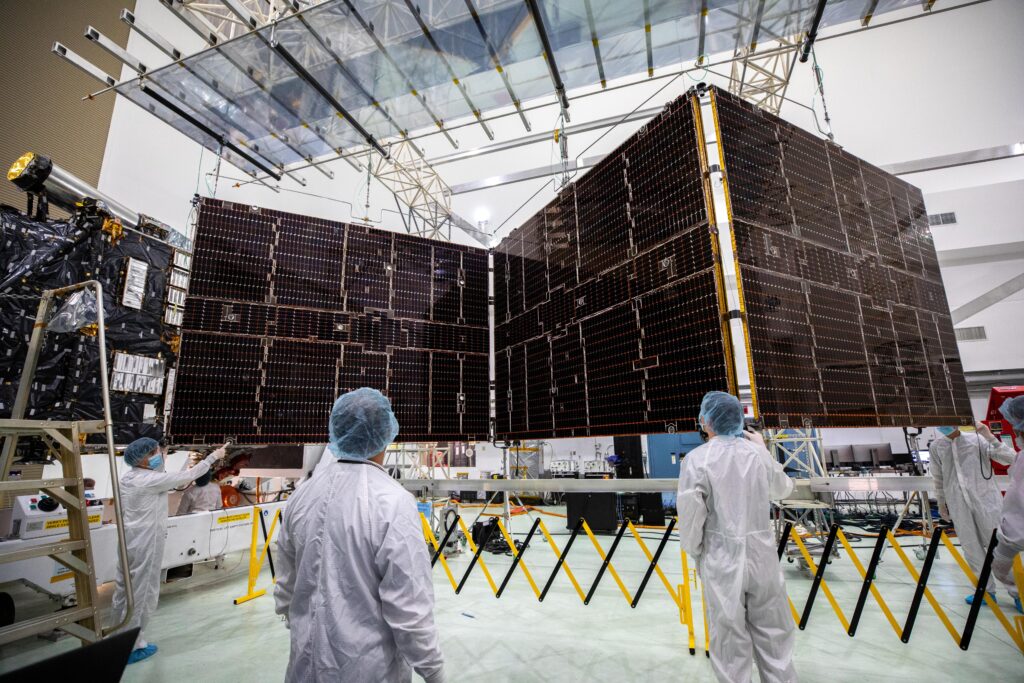Specialists of the Kennedy Space Center successfully installed solar arrays on the Psyche probe. This operation was one of the last steps on the way to the launch scheduled for October.
Why are solar arrays required?
The target of Psyche is the asteroid Psyche, characterized by a high content of metals (iron and nickel). According to a popular hypothesis, it is a fragment of the core of a protoplanet that died at the beginning of the Solar System.

Like most spacecraft, Psyche will be powered by solar arrays. It is necessary to power its scientific instruments, communicate with the Earth and operate ion engines that will turn fuel (inert gas xenon) into plasma, and then accelerate it in an electric field, creating a weak but continuous jet thrust that can be maintained for years. Due to the absence of atmospheric drag during its journey through the asteroid belt, the spacecraft will accelerate relative to the Earth to a speed of 200,000 km/h.
Record-breaking solar arrays
The orbit of Psyche is located at a distance of 430 million km from the Sun and its surroundings receive ten times less sunlight than the surroundings of the Earth. Therefore, the designers had to equip Psyche with very impressive photovoltaic arrays, which have a total surface area of 75 m2. These are the largest solar arrays ever built by NASA’s Jet Propulsion Laboratory.
At the end of July, the specialists of the Kennedy Space Center installed them on Psyche. Then they tested their deployment mechanism. This is a very important operation, the success of which will determine the future of the mission. Recent examples include the Lucy probe, which failed to fully deploy its solar arrays, which caused NASA to worry a lot.
After the engineers were convinced of the correct operation of the deployment mechanism, they folded the Psyche solar arrays. The next time they will be deployed in space.
In the coming weeks, engineers will refuel Psyche with 1085 kg of xenon fuel. After that, it will be prepared for installation on a launch vehicle. The ballistic window for the launch of Psyche will be open from October 5 to October 25, 2023. The spacecraft will be launched into space by a Falcon Heavy rocket. It will take Psyche six years and one gravity maneuver in the vicinity of Mars to get to the target. If all goes well, the spacecraft will enter orbit around Psyche in August 2029.
According to https://www.jpl.nasa.gov
Follow us on Twitter to get the most interesting space news in time
https://twitter.com/ust_magazine
